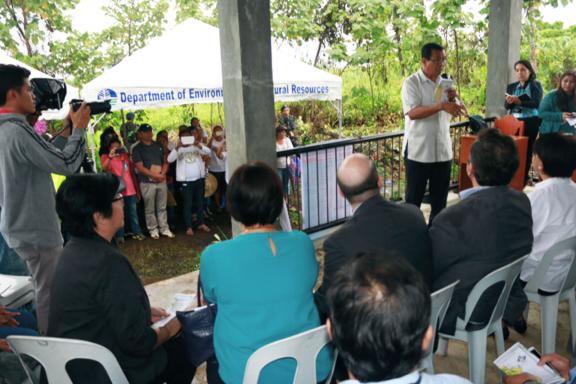Climate finance should include the poor, Philippine officials tell visiting GCF group
Climate finance plays a key role in helping poor people who are most vulnerable to climate change, senior Philippine environment officials told a visiting GCF delegation.
Climate finance plays a key role in helping poor people who are most vulnerable to climate change, senior Philippine environment officials told a visiting GCF delegation led by Executive Director Howard Bamsey.
“We have to make sure that environment and climate change sit at the core of our development plans,” Senator Loren Legarda, Chair of the Senate Committee on Climate Change, told the GCF team during its visit to the Philippines on 15 to 17 February.
“The GCF presents great opportunities for economic and social development, and I am excited to witness and be part of all the positive changes happening in the next few years,” said Senator Legarda, while highlighting potential benefits to the Philippines’ 15 million indigenous peoples.
Mr Bamsey joined Senator Legarda and other high-level figures, including Philippine Environment and Natural Resources Secretary Gina Lopez, explore ways to ensure climate finance can target those most in need in this sprawling archipelago nation, which is particularly prone to wild weather.
Secretary Lopez said it had been a pleasure presenting to GCF “our country's plans to address the drastic effects of climate change to our environment and our people, towards our goal of attaining peace and resiliency”.
“With the positive reception to our presentation, the Department of Environment and Natural Resources has indeed a lot of work to do in making these plans into a full-blown proposal to the Green Climate Fund,” said Secretary Lopez.
Mr Bamsey highlighted the importance of ensuring Philippine funding proposals to GCF have a clear climate rationale to match the Fund’s mandate.
The GCF Executive Director added he was pleased to see that country ownership, an overarching principle of the Fund, lay at the core of the Philippines’ approach to climate change.
During extensive meetings about the potential of climate finance in the Philippines, environmental staff pointed out climate change is one of the country’s five clusters of priority in coordinating national development projects.


They explained how the Philippine Government is focusing on poor regions in the southern island of Mindanao and the regions of Visyas and Luzon in the north to implement climate change initiatives focusing on bamboo and mangroves.
Seeking prior consensus from indigenous groups in these areas was a key part of this work which came with adaptation and mitigation benefits gained through improved sustainable management and carbon sequestration.
Disaster risk management remains a key plank of the Philippines climate policy suite as this nation of over 7,640 islands is vulnerable to extreme weather events, such as Typhoon Haiyan which killed more than 6,300 people in 2013.
Germanwatch’s Global Climate Risk Index 2016 identified the Philippines as the fourth most affected country by extreme weather events during the past two decades.